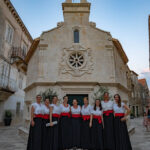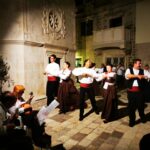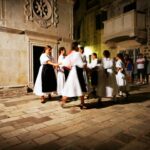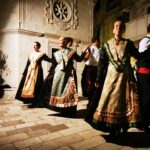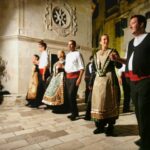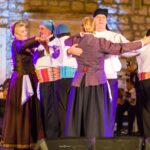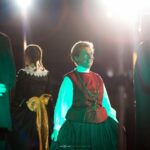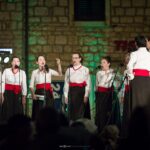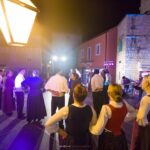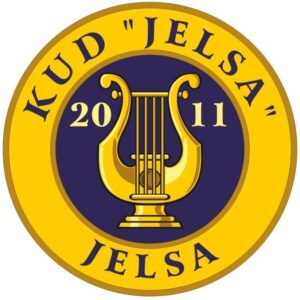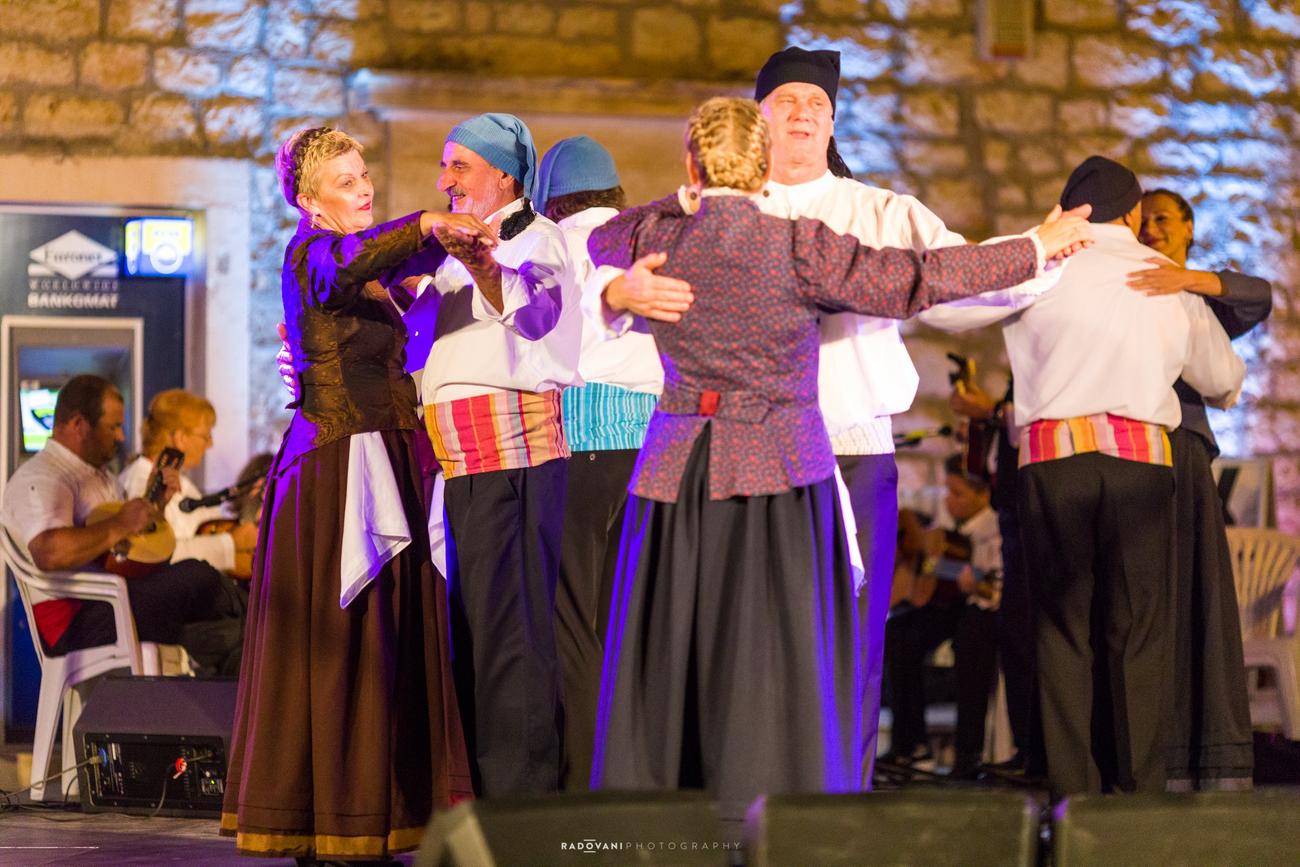
The Jelsa Cultural-Artistic Society
In Croatian the Society is called Kulturno-umjetničko društvo ‘Jelsa’, and is known as ‘KUD Jelsa’ for short. This folk-dancing ensemble performs at every major event in Jelsa and is regularly invited to perform alongside other folk-dancing groups both from Croatia and abroad. In May 2019 the ensemble’s energetic members organized an international folk-dancing festival in Jelsa, which is intended to become an annual event.
KUD ‘Jelsa’ in its present form was founded in 2011 under the enthusiastic and energetic leadership of Perica Mileta. Its activities are based on the rich legacy of the original Jelsan Cultural-Artistic Society, which was active from 1945 up to the early 1960s, and was named after a local hero, Professor Čiro Gamulin, who had died in the Second World War. Since its revival, KUD ‘Jelsa’ has achieved much in preserving and furthering local traditions and cultural heritage. All age groups are engaged in its activities. Succeeding generations have been taught traditional folk dances as well as the cultural history of their region. Singing is also part of the society’s activities. In Dalmatia, a cappella singing groups are called ‘klape’, and two have emerged alongside the dancing, a female group called ‘Klapa Frecija’ and a male group, ‘Klapa Priženca’.
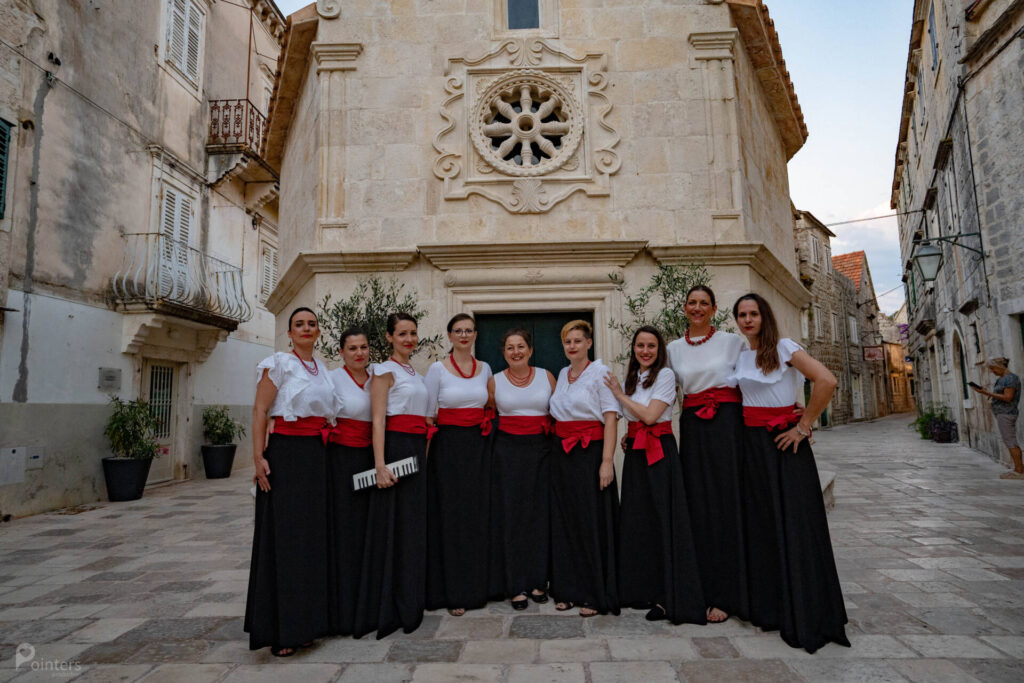
The Society’s commitment and enthusiasm are always in evidence throughout the year, with new members welcome at any time. In their first year, they launched an event titled “Jelšonske užonce – da se ne zaboravidu” (“Jelsan customs, lest we forget”), which is a musical stage play featuring life and customs in Jelsa at the end of the 19th and beginning of the 20th century. The costumes are faithful replicas of the clothing worn on the island in the second half of the 19th century. In the play one can see the full scope of KUD ‘Jelsa’s’ activities: it starts with a cheerful children’s song, followed by an authentic Dalmatian harmony piece sung by ‘Klapa Frecija’. The folk dancers perform traditional Hvar dances, accompanied by mandolin players and an accordion. These old dances used to be performed with slight variations in different parts of the island, but they had a characteristic dance step (three-step) and pronounced shoulder movements.
The Society’s repertoire has brought to life other treasures from Jelsa’s cultural history, most notably the five-dance suite for string orchestra titled “Jelšanski tanci” (“Jelsan dances”), by the eminent Jelsa-born composer Antun Dobronić (1878 – 1955).




